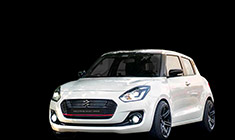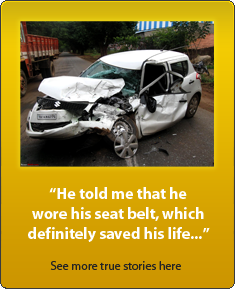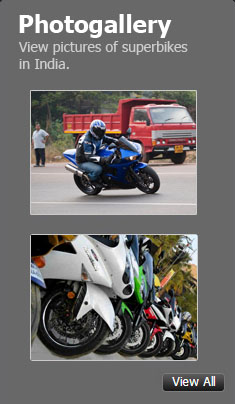News
Rev matching your car & bike with throttle blipping:How often you do it
Downshift and blip the throttle in a split second, keeping the clutch still depressed.
BHPian McQueen recently shared this with other enthusiasts.
Greetings T-BHP members! How many of you use vroom-vroom downshift to rev-match your car or your bike?
For clarification, "vroom-vroom downshift" is the colloquial term for rev-matching achieved through throttle blipping (which generates the "vroom") or a rapid tap on the accelerator.
Description of the method:
- Release the accelerator/throttle/gas pedal
- Engage the clutch
- Downshift and blip the throttle in a split second, keeping the clutch still depressed.
- Release the clutch
Here are some videos of the same.
My questions to all of you:
- How many of you use this technique while driving your car?
- How many of you employ this technique while riding your bike?
- Can we switch the order of blipping the throttle and downshifting in step 3? That is, blip the throttle first, then downshift. This oughtn't to be an issue as the engine revs up and brakes until the desired RPM is reached (which occurs rather quickly), with only the sequence of it being altered.
Here's what GTO had to say on the matter:
Only really possible in a Petrol MT. Three of our primary drivers are ATs, while the only MTs I now own are diesels.
But yes, the last time I was revv-matching for fun, it was in a Fronx MT. Absolutely loved that car.
Here's what BHPian shankar.balan had to say on the matter:
This is an old technique which used to be common place in all non-synchromesh manual gear-shift cars in normal driving, rallying and racing too.
Most of us who learned our driving in the hills learned this rev matching technique too, along with ‘heel and toe’ on an incline, etc. The Standard Heralds, Ambassadors and Fiats and all used to have 3 forward synchromesh gears but first gear was not. As per my memory from the 1970’s, 1980’s and 1990’s all those who drove Fiats in particular, used to particularly enjoy the nice burbling sound that came naturally through the exhaust end can and used to always ‘throttle blip’ when downshifting when approaching an upward or downward incline or when taking a turn. This sound, coupled with the smell of exhaust gases and the unique whine of the transmission in those Fiats, are etched forever in my memory. Throttle blipping to rev match was always easier in cars which had floor shift gears. Many Fiats were modified to this. And even after the advent of the Maruti SS80 many drivers used to do this. The Gypsy in particular was conducive to all of these techniques and it felt particularly as if one was ‘flying low’ even if one was only at 50 or 60 kmph. The throttle blipping, rev matching and all of this simply added to the aural and mechanical pleasure in the act of driving. I still do all this in my Gypsy but the other cars are Automatics, hence I tend to use the paddle shifters in the Cooper to enhance the ‘burble’ or the Manual mode in the Thar to achieve kick down. After a poijt it becomes pure instinct when one’s earnis totally attuned to the car and the ‘right revs’ and one instinctively changes gears almost on Auto Pilot.
For example, I would rather use the Paddles in the Cooper along with the throttle so as to achieve higher revs and put on a burst of speed, than just mash the pedal and go into Over Boost etc. I think this technique is gentler on my car as well as being very enjoyable.
Here's what BHPian Cresterk had to say on the matter:
I do it all the time in my 6 speed i20 crdi. Like with most turbo diesels, the power band is narrow and hyundai gave it some weird gear ratios so downshifting without it would lead to massive jerks. Kerala is pretty hilly so I even use it for slowing down before curves so I don't end up lugging the engine or roasting the clutch. I do it by :
- I start braking with my right foot
- pressing the clutch in with my left foot while still braking with my right foot
- Pivoting my right heel to also blip the accelerator to rev up the engine to match the RPMs it would need to be in a lower gear and downshift. I will be using all 3 pedals while downshifting.
- After engaging the gear, I let go off the clutch and I can either continue braking or press the accelerator to smoothly take off.
This is called the heel-toe method.
Here's what BHPian Jeroen had to say on the matter:
It's a carry over from years beyond. From the time we had no synchronization or poor synchronization between gear shift. It is also used in racing and rallying.
There is no need for it on modern cars, unless you enjoy doing it of course. I usually do whichever car I drive. It will give you a slightly more smooth shift of the gear stick.
I have always used it on my Alfa Romeo Spider. Even though the gearbox is fully synchronised. A weak point was the synchromesh rings wearing out quickly on 1-2 and 2-3. And of course, it makes for a terrific sound!
Jeroen
Here's what BHPian sudeepg had to say on the matter:
I do it a lot of times during my drive as it helps keep the engine in the power band, especially when doing spirited driving. Very effective and I like the engine sound too!
I have not attempted the third one, since the whole idea is to match the engine revs. I engage the clutch, shift in, and almost at the same time, blip in the throttle. This gives a good effect of the engine being in the desired rev range when the clutch is disengaged and accelerating at the same time or get the desired engine braking.
Here's what BHPian Ashtoncastelino had to say on the matter:
I have learned to do this from the initial days since getting the Swift in 2020; I made it a habit since I learned how the car responds to the Accelerator input, which is almost instant since it is drive by cable. I'm not sure, but I think this lessens the wear and tear on the clutch.
But I genuinely enjoy doing this on the drive-by-cable car; this is not relatively easy to nail on the drive-by-wire vehicles of today's era, at least for me.
Check out BHPian comments for more insights and information.














.jpg)




